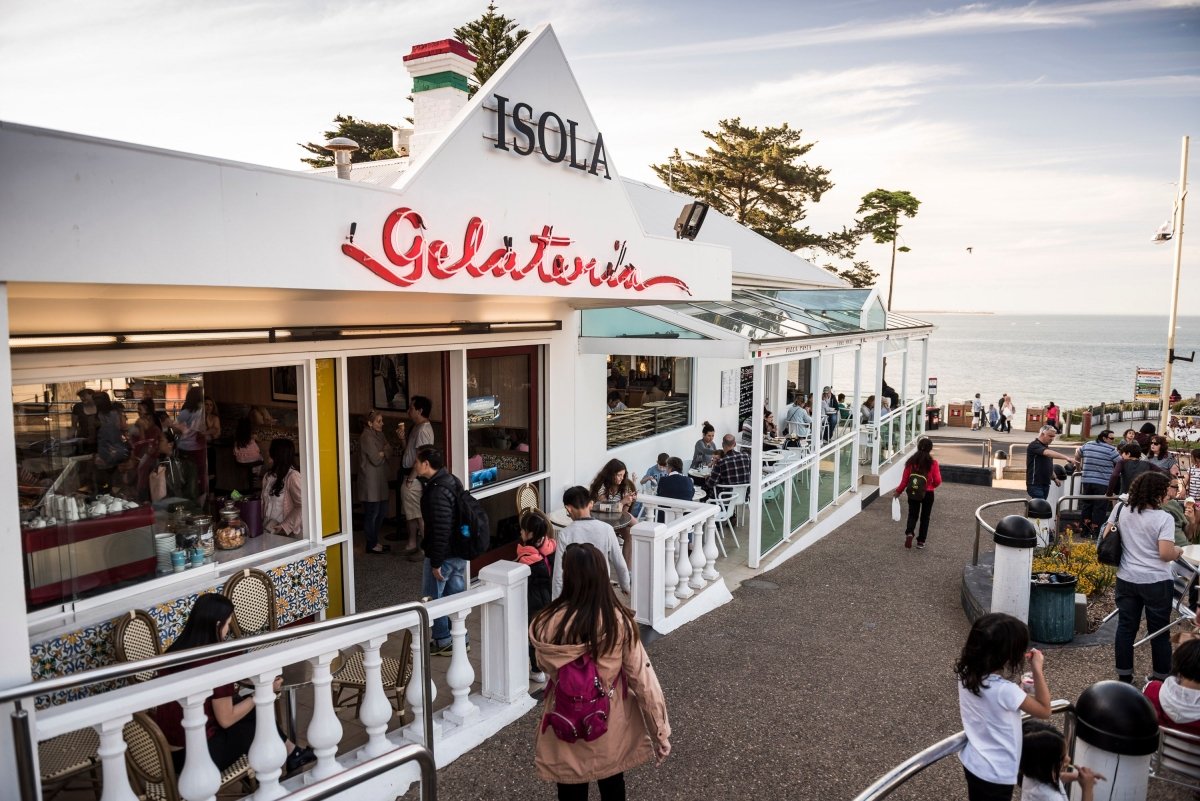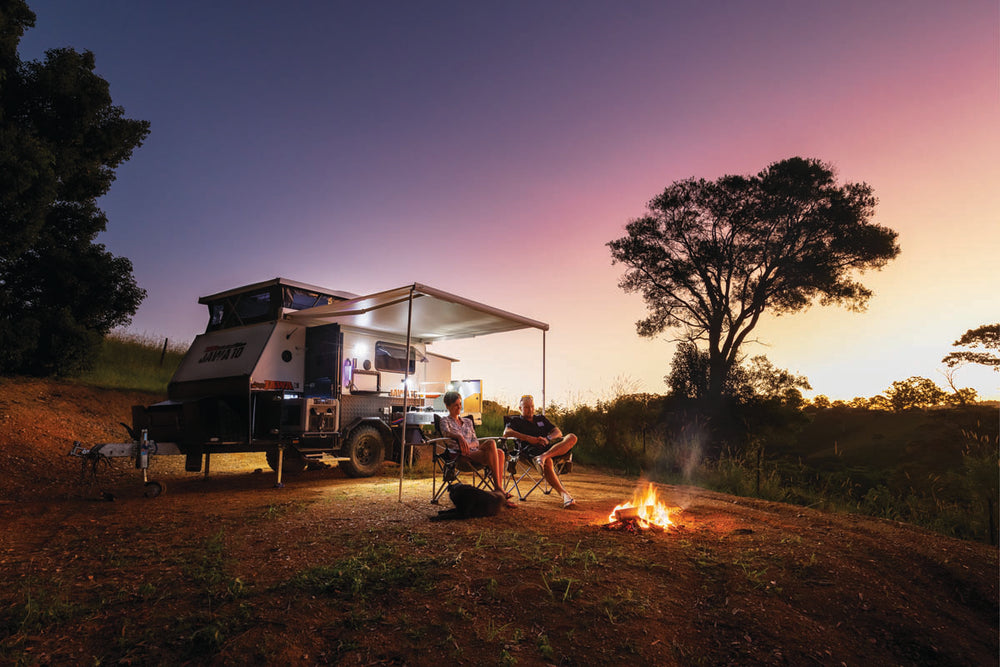Phillip Island

Penguins are one of the oldest kinds of birds: it’s believed they’ve been around for more than 60 million years.
Little penguins are the smallest of the world’s 17 species, and grow to a mere 33cm in height. Native to Australia, they have been nesting in the sand dunes around Phillip Island, VIC since time immemorial.
Early farmers on the island, which was first settled by Europeans in 1842, had the island’s glorious beaches to themselves. Many pioneering families made their way across the trackless landscape to Summerlands Beach to watch little penguins make their way to their burrows in the dunes after a day’s fishing at sea.
Aside from locals and a sprinkling of visitors, all was relatively quiet at Summerlands until the 1920s, when an access track was established and growing numbers of visitors began seeing the penguins perform their nightly ritual.
Today Summerlands is home to Phillip Island Nature Parks Penguin Parade, one of Australia’s most popular wildlife attractions.
BEAT THE CROWDS
During peak holiday periods just getting onto what is affectionately known by locals as “the island”can, like many popular holiday destinations, be hard work. Traffic has been known to be banked as far back as Grantville, 22km north, and from there crawl into the seaside town of San Remo, and across the bridge onto the island.
In the off-season, you may need to rug up to experience some of Phillip Island’s charms, but the roads are a breeze, there’s no jostling with crowds in the island’s main town of Cowes, and the queues to attractions such as the Penguin Parade are much reduced.
Little penguins make their sunset journey to Summerlands every night of the year, regardless of the weather.
When not penguin-spotting, there are other nature-based experiences including Australia’s largest colony of fur seals, koalas, shearwaters (mutton birds) and pelicans.
Just 26km long and 9km wide, Phillip Island is surrounded by fine swimming beaches to the north of the island, and rugged ocean beaches on the south side, which faces windswept Bass Strait.
The seaside town of San Remo is the gateway to Phillip Island. Here a 700m-long bridge spans a channel known as The Narrows, connecting San Remo to the town of Newhaven.
A cluster of fishing boats are moored around the San Remo jetty, just near the San Remo Fishing Co-operative, a popular place to stock up on fresh seafood, and equally renowned for its fish and chips.
Every day at around noon a pod of pelicans descends for their daily feed of fish on the sandy beach foreshore near the jetty, a sight that thrills children and photographers alike.
San Remo’s Marine Parade features some chic cafes, a bakery, supermarket, and two popular pubs, the San Remo Hotel and The Westernport Hotel, both offering Gippsland beef and lamb and fresh local seafood.
ISLAND-STYLE DINING
Across the bridge is the village of Newhaven, home to Bass Coast Direct fresh fish shop in Boys Home Rd, a yacht club and marina, and Saltwater Phillip Island, a classy cafe at the pier established in an abandoned abalone processing factory with sensational views across the Narrows and San Remo.
Saltwater is big on local produce, serving the likes of Archies Creek rib eye steak with locally-farmed vegetables, and handmade fettucine with Bass Strait scallops. Popular woodfired pizzas include local olives, mushrooms and black truffle oil.
Saltwater is one of many Phillip Island dining experiences open throughout the cooler months.
Just past Newhaven is the turnoff to Churchill Island, a lovely little isle on the island’s eastern shore that is rich with history: it was discovered, along with Phillip Island, by George Bass and Matthew Flinders in 1798.
Three years later, in 1801, Lieutenant James Grant built a cottage on the 50ha island and planted corn, wheat and a small garden in what was Victoria’s first European settlement.
Today the Churchill Island Heritage Farm has several historic buildings and gardens dating from 1866 to explore, and a maze of walking tracks including a 5km trail around the island.
On the fourth Sunday of the month Churchill Island hosts a farmers’ market featuring quality produce from across Phillip Island and the surrounding region.
WILD AND WOOLAMI
Back on Phillip Island Rd, it’s a few kilometres to the Cape Woolamai turnoff. Situated at the tip of the island’s south-eastern peninsula, Cape Woolamai is Phillip Island’s highest point, and is a well-known surfing beach that’s ideal for a beach walk at any time of the year.
Lesser known is Cape Woolamai Safety Beach, accessible from Cottosloe Ave, 4.7km of low-wave, curving sandy beaches running from the bridge at Newhaven to the rocks of Cape Woolamai, that locals know are partially protected from westerly winds.
For thousands of years the Bunurong people visited Phillip Island during the summer months, crossing from the mainland by bark canoe.
Aboriginal middens containing the remains of shellfish and shearwater (mutton-birds) have been found in sand dunes around the island, including at nearby Forrest Caves, popular for surfing and rock rambling.
Not far from here is the right-hand turn to the north-eastern tip of Phillip Island and the seaside town of Rhyll, which overlooks French Island.
After a few kilometres there’s another right-hand turn into McFees Road and the Purple Hen Winery, which produces premium cool climate wines that have been awarded more than 120 medals and trophies.
The Purple Hen cellar door, which has great views of Swan Inlet and Churchill Island, is open all year, (closed Tuesdays and Wednesdays from March to Christmas Eve), and is well worth a pitstop.
TIME TO GET RHYLL
Popular with fisherfolk, Rhyll has a jetty and boat ramp, where anglers cast a line for the likes of King George whiting, Australian salmon, flathead and garfish.
Rhyll’s Foreshore Bar and Restaurant has a balcony where you can wine and dine beside tranquil waters on dishes that may include Gippsland scotch fillet and local fish and chips.
Rhyll Inlet is a world-renowned habitat for migratory waders, and the walking tracks in this area allow for good birdwatching opportunities.
The inlet’s boardwalks and trails loop through mangroves, saltmarsh and mudflats that are a haven for the spoonbills, straw-necked ibis, swans, little pied cormorants and hooded plover that visit annually to feed and breed.
From Rhyll take the Rhyll-Newhaven Rd, turning into Harbison Rd towards Phillip Island’s Koala Reserve, where visitors have the opportunity to see these iconic cuddly animals in their natural habitat.
Two treetop boardwalks allow visitors to see koalas in the trees, the 800m-long Tree Top Koala Boardwalk and the Woodland Tree Top Walk, which runs for 1km.
The nearby Oswin Roberts Reserve, which has free entry, is also home to much-photographed koalas. The reserve is the last remaining grove of natural woodland on the island, with species including eucalypt, paperbark and acaciathe, and has walking and cycling tracks.
SEAL THE DEAL
Cowes has been the epicentre of Phillip Island since the town, originally in an area called Mussel Rocks, was first established in 1865. These days it’s a rather busy place, with a plethora of shops lining the town’s main thoroughfare, Thompson Ave, and beyond. There are eateries galore here for visitors to choose from, and most of these are open throughout the year.
Isola di Capri, situated at the very end of Thompson Avenue near the Cowes Jetty, has been a local dining institution run by Eddie Fumagalli and family since 1972, serving pizzas and all delicious things Italian.
Pino’s Trattoria, established in 1991, is another good Italian dining choice, as is Fig and Olive, popular for its woodfired pizza and international menu.
Bani’s Kitchen in Chapel St is the go-to place for Mediterranean-inspired dining at reasonable prices, popular for souvlakis, slow-cooked lamb shoulder, grilled cuttlefish, and innovative vegetarian dishes.
Every year humpback whales, southern right whales and even the occasional pod of killer whales start to arrive in the coastal waters around Phillip Island as they make their way north to their winter breeding grounds.
The Cowes Cultural Centre is the hub of the Island Whale Festival, this year from July 5 to 7, which celebrates the arrival of these majestic creatures to local waters. The three-day event features events across the island and, of course, whale-spotting from either land or sea.
Wildlife Coast Cruises offer several cruises during the annual whale migration from June to August including the four-hour Winter Whale Cruise (departs Rhyll) or three-hour Dolphin and Whale Cruise (departs San Remo).
Along the way, there is the opportunity to see some of the island’s spectacular coastal formations including sheer granite cliffs at Cape Woolamai, and iconic Pyramid Rock.
Whale-spotting cruises will also get up close to thousands of fur seals at Seal Rocks, a group of rocky islets 1.5km off the southwestern tip of the island at a rocky peninsula called the Nobbies.
If sea journeys are not your thing, the Nobbies is just 14km southwest of Cowes and five-minutes’ drive from Summerlands.
Seal Rocks is home to one-quarter of the entire population of Australian fur seals — more than 30,000 seals — and you can see many of them from Phillip Island Nature Park’s Nobbies Visitor Centre, which overlooks Seal Rocks.
Here you can use cameras that zoom on to the seals as they frolic above and below the water, get a bird’s eye view of the prolific birdlife nesting in the surrounding cliffs, and enjoy a warming cuppa at the cafe.
Outdoors, a network of boardwalks have amazing views of Seal Rocks, the island’s rugged south coast, as well as the blowhole, a huge sea cave that thunders with ocean spray during big swells.
WELCOME TO PENGUIN TOWN
From the Nobbies, take the coast road back to Summerlands, a little-known gravel road that winds along the windswept peninsula past pristine, secluded coves where Cape Barren geese graze, wallabies hop, and seabirds glide overhead.
In the 1920s this area was subdivided into 900 blocks of land and named Summerland Estate, and by the late 1940s fibro holiday houses began to be built across the tussock grass. Soon afterwards, confused little penguins began to nest beneath houses.
By the 1980s, when Summerland Estate consisted of more than 170 houses, a local penguin study group was becoming increasingly concerned by the declining penguin population.
In mid-1985, after much lobbying and debate, then Victorian premier John Cain announced that the state government would buy back the entire estate and return it to a wildlife reserve for little penguins.
The buyback scheme concluded in 2010, and today unless you knew there was once a town here, you’d never know the area was once pockmarked with holiday homes. These days Phillip Island’s little penguin population has increased exponentially, from around 12,000 in the 1980s to more than 36,000.
Just past the entrance to the Penguin Parade on Ventnor Rd is Swan Lake, Phillip Island’s only freshwater lake. Walk the 1.3km path to the two bird hides overlooking the lake, which is home to birdlife including ibis, egret, purple hens, and ducks.
For those with an interest in history, nearby Ventnor was the place where Phillip Island’s first settlers, the McHaffie brothers, took up a pastoral leasehold in 1842. They are remembered by McHaffie Lagoon, the site of their homestead, and McHaffie Point.
Spending time at Phillip Island, you happen across many gems, and the Phillip Island Winery is one of them. From Ventnor, continue towards Cowes for a few kilometres before turning right onto Ventnor Beach Rd and then Berrys Beach Rd, near the Grand Prix Circuit, and the winery.
Buzzing with locals, Phillip Island Winery specialises in all things regional at its cafe and outdoor dining area, complete with blazing open fireplace.
Popular shared grazing plates include local cheeses, breads, olives, meats and locally-foraged mushrooms, accompanied by anything from shiraz to a sparkling chardonnay-pinot noir blend.







